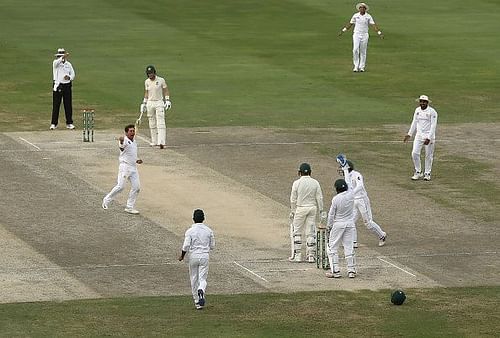
5 reasons why ICC should adopt Ranji-style pattern in Test cricket

The second Test between India and West Indies began today at Hyderabad. In all likeliness, Team India is competing against themselves and would be looking to play more clinical and dominating cricket against a hapless West Indies side that has failed to defeat India in India at a Test match since 1993-94. Such has been the paradigm shift in cricket that the once ‘all-conquering’ Caribbean side is challenged by new blokes in the arena: Bangladesh, Afghanistan, Zimbabwe and Ireland.
On one hand, it’s good for cricket fans to see the game expanding to new horizons but at the same time difficult to witness an old power diminishing gradually. Pundits believe the geographical nearness of Caribbean archipelago to the USA as the reason natives are throwing in the towel when it comes to cricket. It’s not only the lucrative basketball, baseball, American football or soccer that attracts them but also the constant managerial failure by the WICB that comprises of Jamaica, Trinidad & Tobago, St’ Kitts & Nevis, Guyana, Antigua & Barbuda.
Apart from this, the cash-rich IPL and other T20 leagues have attracted them more than anyone else. There was never a dearth of talent in the millennial generation but these factors led them to shift their base into other sports and formats/allegiance (Tests to T20/club before country).
To address this challenge, what ICC needs to do is pit evenly-matched teams against each other; not like a poor goat trying to defend itself against a mighty tiger. Here comes the Indian domestic structure for the longer format that the ICC needs to look into. They should implement the much-talked ‘two-tier system’ in Test cricket as has been prophesied by many ex-cricketers. So let’s take up 5 reasons why the ICC should adopt the Ranji-style pattern in Test cricket.
#1 Two-tier will be more contesting and evenly matched
The two-tier system will consist of two groups; the Elite and the Plate division where the top top-ranked sides will be clubbed in the former division and the bottom five in the latter. And as the policy goes, the top five will play among themselves both in ‘home’ and ‘away’ series. Similarly, the bottom five will also follow the same pattern.
After completion of a certain period, the ranks will be taken into consideration where the fifth-ranked side in the top five will relegate to the Plate division and the sixth-ranked side will elevate to the Elite Division, and the process continues.
Applying this procedure, the bottom five will be propelled to do better and improve their rank to challenge the big boys sitting on top. On the other hand, the top five will be cautious enough not to drop down in their rankings.